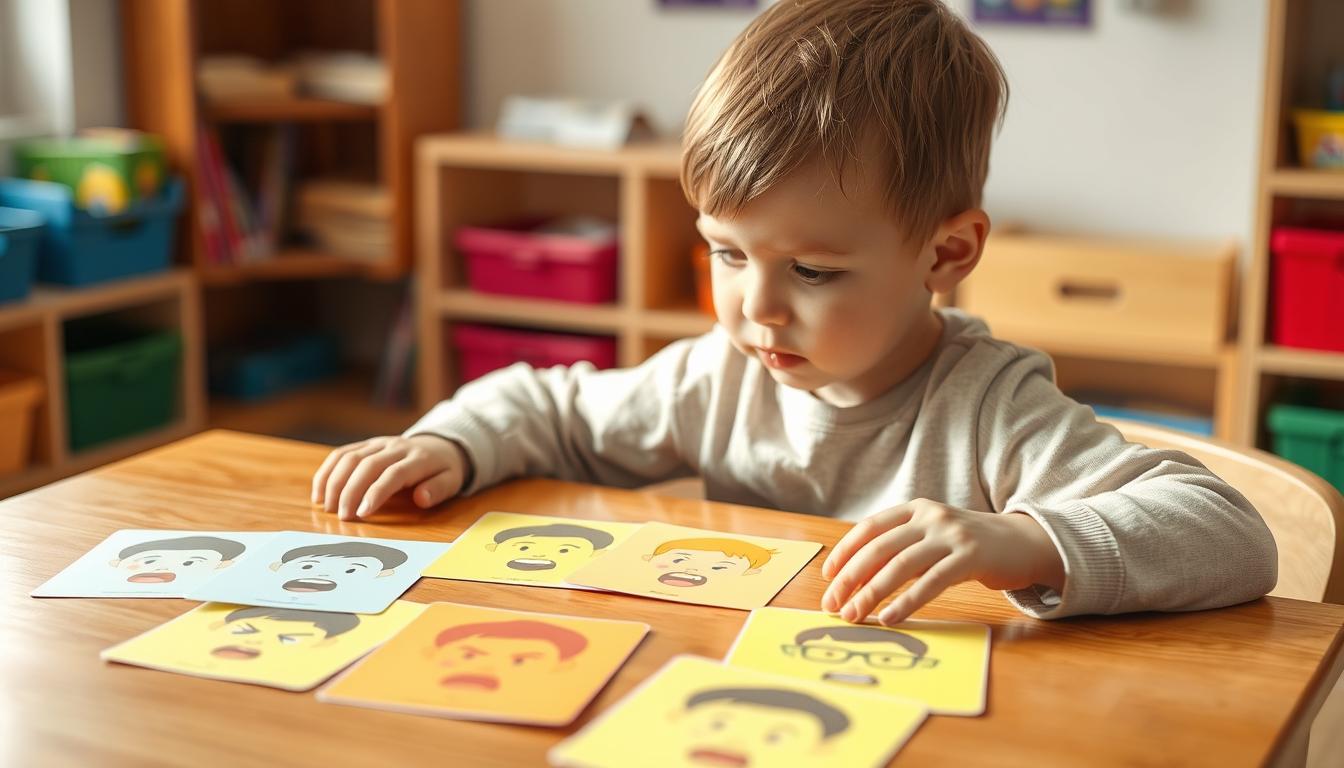Feelings and Emotions Flashcards: A Powerful Tool for Teaching Kids Emotional Intelligence
This guide explores how these specialized flashcards work, why they’re so effective, and provides practical ways to incorporate them into your daily interactions with children aged 3-10. You’ll discover activities, printable resources, and expert tips to help nurture emotionally intelligent kids who can navigate their feelings with confidence.
Why Feelings and Emotions Flashcards Are Effective
Children are visual learners by nature. When abstract concepts like emotions are presented through concrete images, they become much easier to grasp. Feelings and emotions flashcards bridge this gap by providing clear visual representations that children can connect with their internal experiences.
Key Benefits of Using Emotion Cards for Kids
- Emotional Vocabulary Development – Children learn to name and identify a wide range of feelings beyond the basic happy, sad, and angry.
- Improved Communication Skills – Having words for feelings helps children express themselves more clearly instead of acting out.
- Enhanced Empathy – Recognizing emotions in others is the foundation of empathy and healthy social relationships.
- Better Self-Regulation – Children who can identify their feelings are better equipped to manage them appropriately.
- Reduced Behavioral Issues – Many tantrums and conflicts stem from inability to express emotions effectively.
Research in child development consistently shows that emotional intelligence is as important as academic intelligence for success in life. By using feelings and emotions flashcards regularly, you’re helping children develop crucial skills that will serve them throughout their lives.
How to Use Emotions Flashcards With Kids
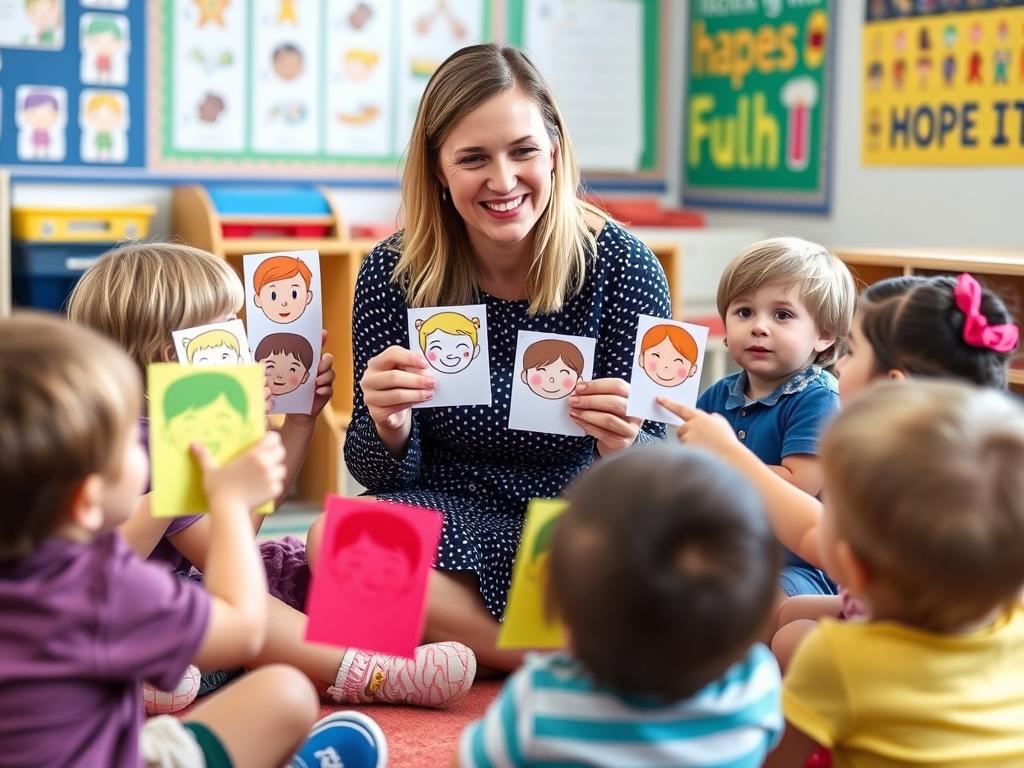
The versatility of feelings and emotions flashcards makes them perfect for various learning contexts. Here are practical ways to incorporate them into your interactions with children:
Emotion Identification
Show a card and ask the child to name the emotion. For younger children, start with basic emotions (happy, sad, angry) before introducing more complex ones (frustrated, embarrassed, proud).
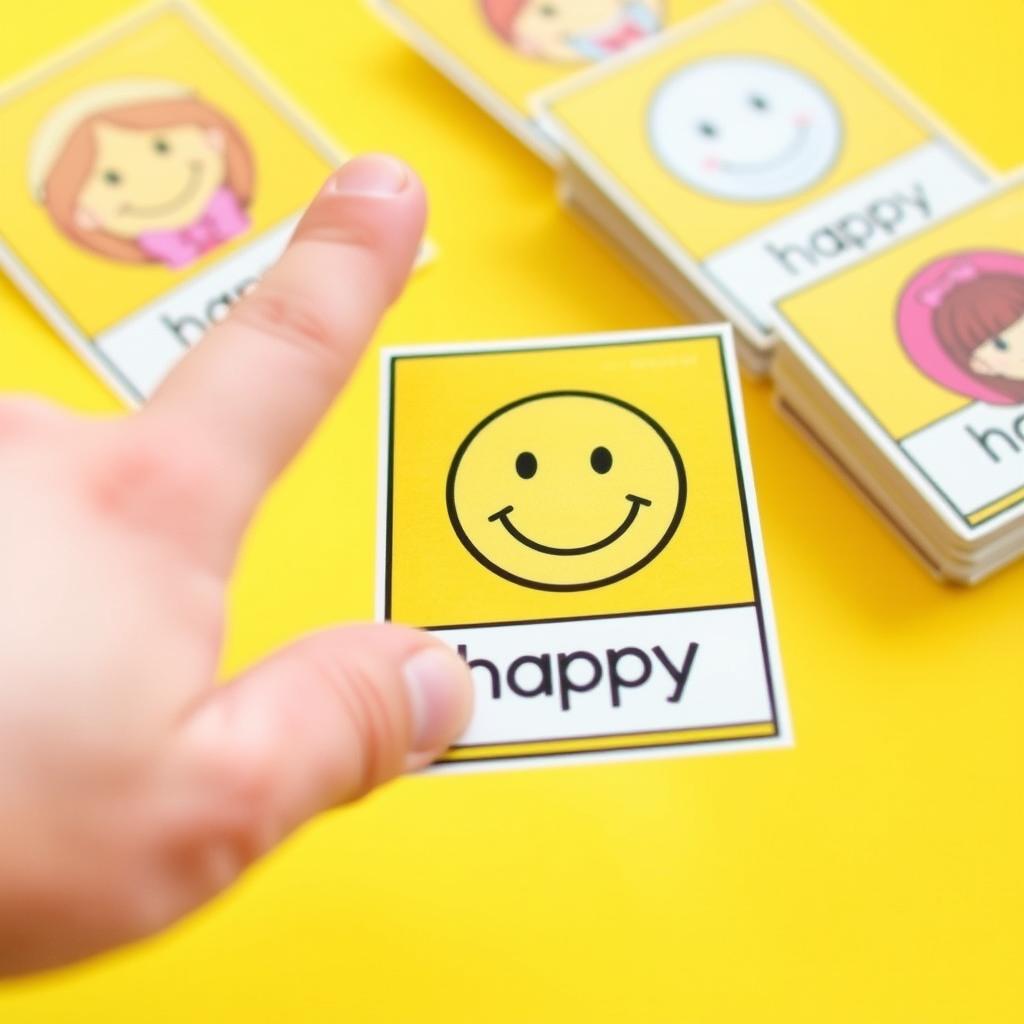
Emotion Discussions
Select a card and ask open-ended questions: “When do you feel this way?” or “What makes you feel excited?” These conversations build emotional awareness and vocabulary.
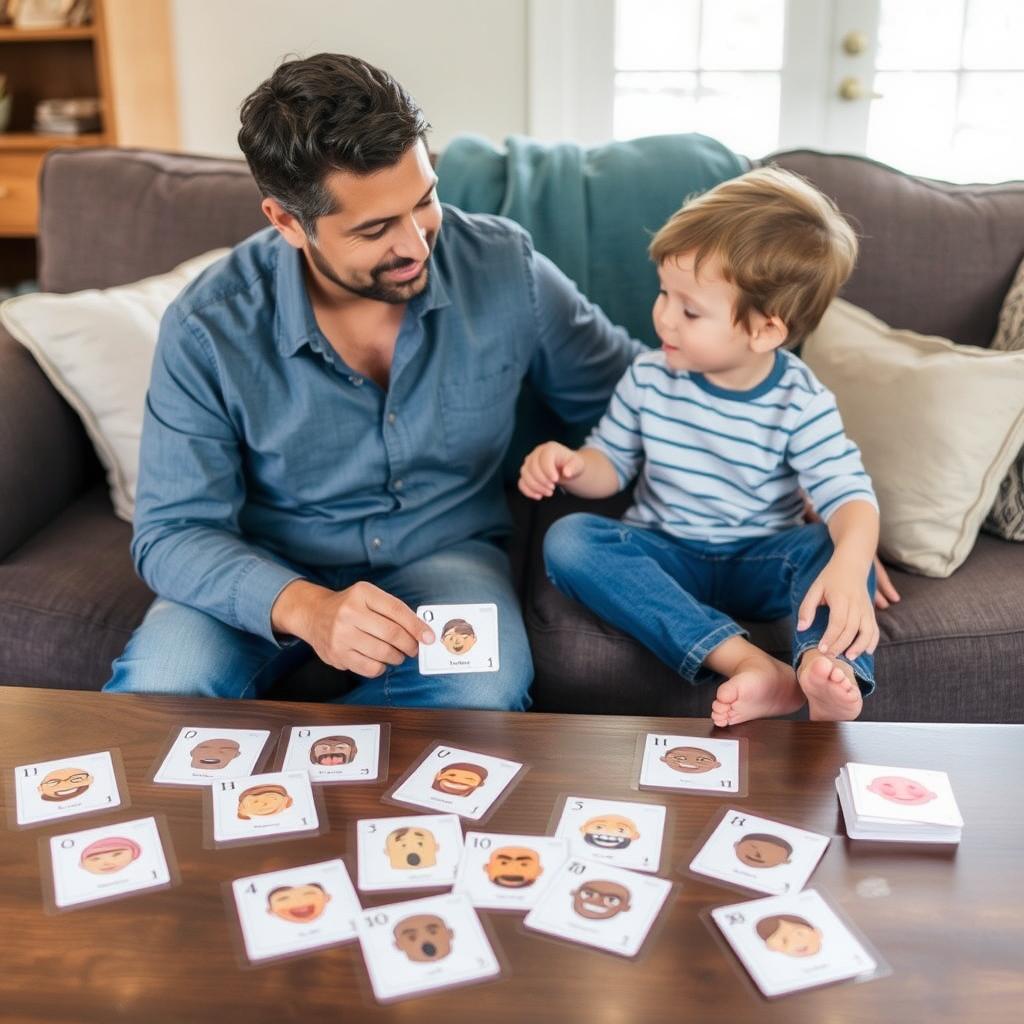
Emotion Charades
Take turns drawing cards and acting out the emotion without words. This fun game helps children recognize physical expressions of different feelings.
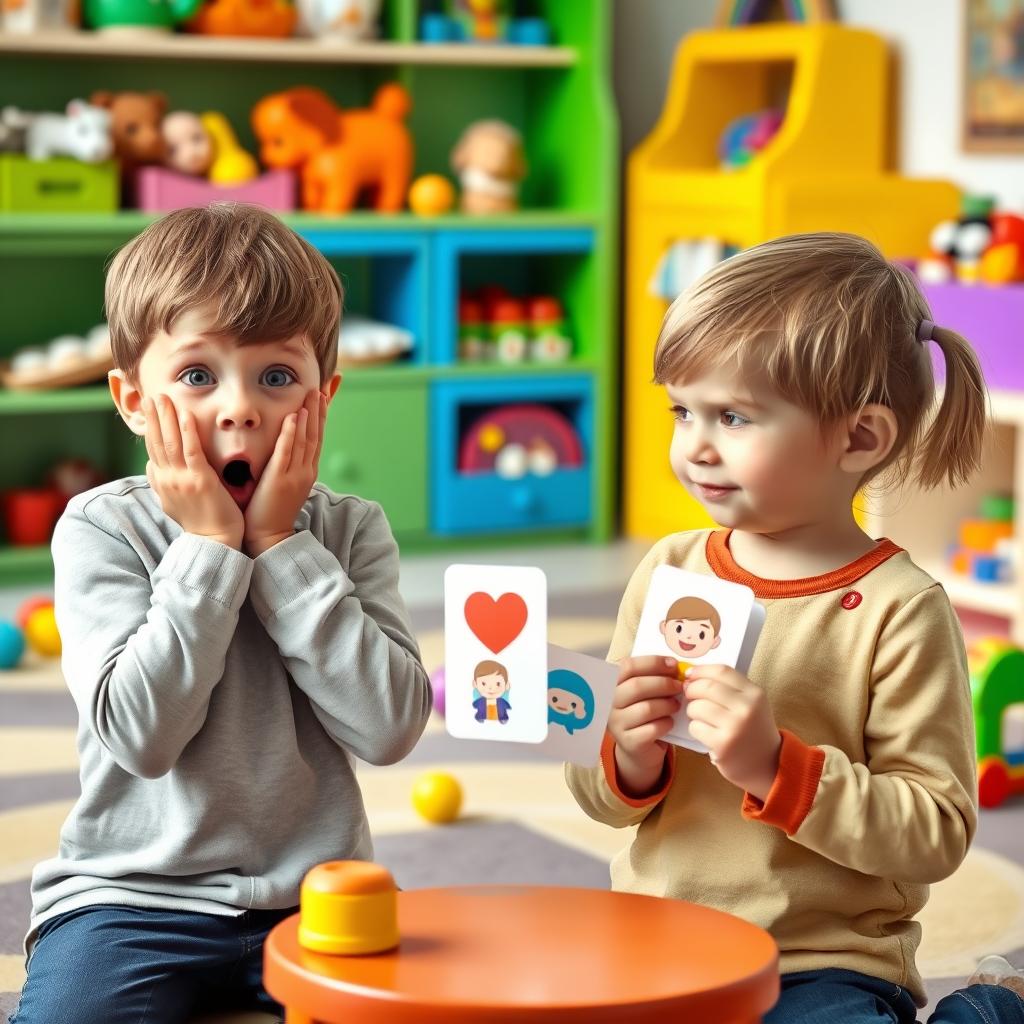
More Creative Activities with Feelings Flashcards
Storytelling with Emotions
Create simple stories using the emotion cards as prompts. For example: “Once there was a bear who felt [draw card: excited] because…” This helps children understand emotional cause and effect.
Emotion Matching Games
For younger children, create duplicate sets of cards and play a matching game. For older kids, match emotions to situations: “Which emotion would you feel if you lost your favorite toy?”
Feelings Journal
Use the flashcards as prompts for drawing or writing in a feelings journal. Children can select a card that represents how they felt during the day and record why.
Conflict Resolution Tool
During disagreements, use the cards to help children identify and express what they’re feeling, making it easier to work through conflicts constructively.
Ready to Try These Activities?
Download free printable emotion cards and activity guide to get started today!
Printable vs. Physical Feelings Flashcards: What’s Best?
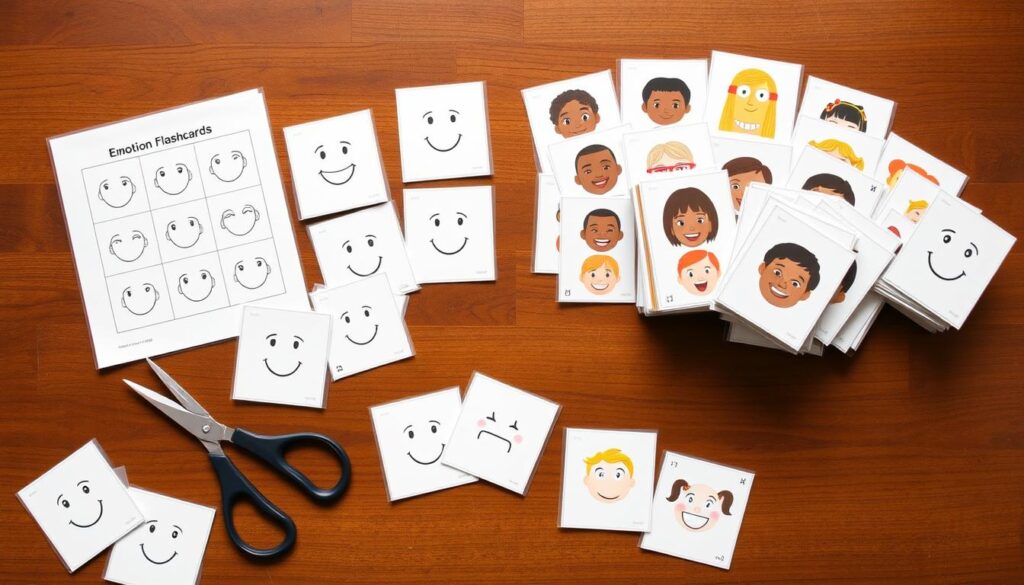
When it comes to feelings and emotions flashcards, you have two main options: printable DIY versions or pre-made physical sets. Each has distinct advantages depending on your needs and circumstances.
Printable Flashcards
- Immediate access – Download and print within minutes
- Cost-effective – Usually free or low-cost
- Customizable – Modify to suit your child’s specific needs
- Replaceable – Easily print new copies if cards get damaged
- Expandable – Print only what you need, add more later
Physical Flashcards
- Higher quality – More durable and professional
- Ready to use – No preparation needed
- Consistent design – Professional illustrations and formatting
- Often larger size – Better for group settings
- Additional features – May include activity guides or storage
Where to Find Quality Feelings and Emotions Flashcards
| Resource Type | Where to Find | Best For | Price Range |
| Free Printables | Educational blogs, Pinterest, Teaching websites | Home use, budget-conscious parents | Free |
| Premium Printables | Etsy, Teachers Pay Teachers | Customized learning needs | $3-$10 |
| Physical Card Sets | Amazon, educational supply stores | Classrooms, counselors, long-term use | $10-$25 |
| Deluxe Sets | Specialized publishers, therapy suppliers | Professional use, comprehensive programs | $20-$40 |
Pro Tip: For the best of both worlds, start with free printable flashcards to test which emotions and activities work best with your child. Then invest in a high-quality physical set once you know what features are most important for your specific needs.
Top 10 Emotions to Include in a Beginner Flashcard Set
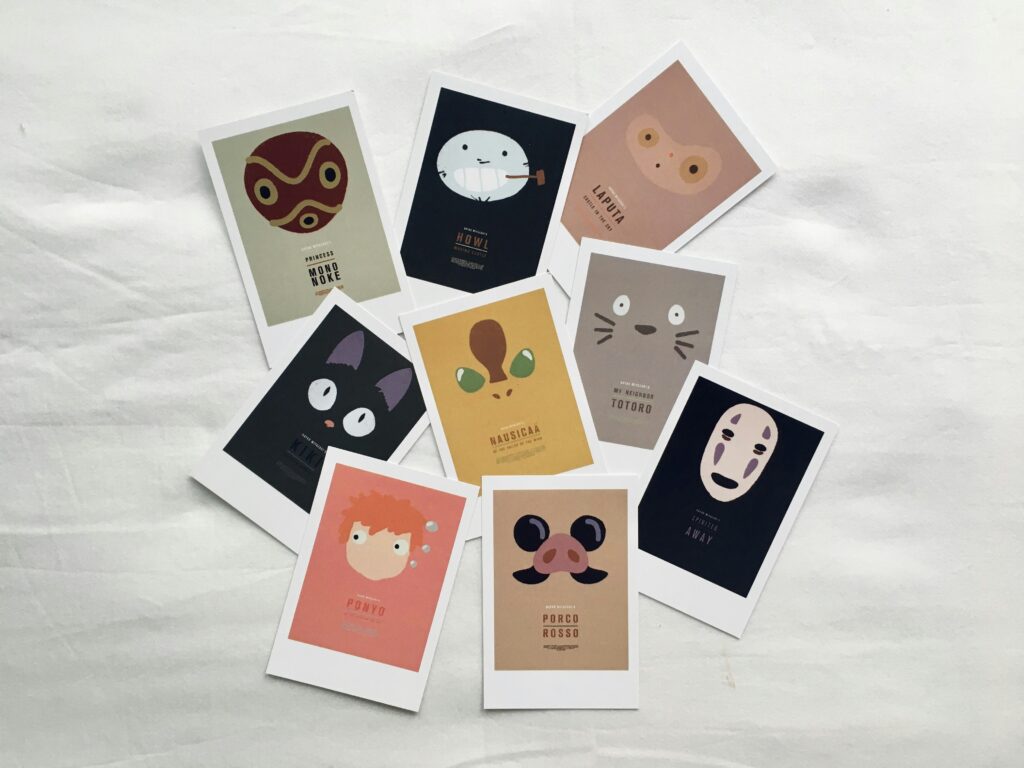
When introducing feelings and emotions flashcards to children, it’s best to start with a core set of emotions that are most relevant to their daily experiences. Here are the 10 most essential emotions to include in a beginner set:
Basic Emotions
- Happy – The foundation of positive emotions and often easiest to identify
- Sad – Helps children recognize and express feelings of disappointment or loss
- Angry – Critical for helping children manage strong negative feelings appropriately
- Scared – Addresses common childhood fears and anxiety
- Surprised – Introduces the concept of unexpected events and reactions
More Complex Emotions
- Excited – Helps distinguish between different types of positive emotions
- Proud – Connects achievements with positive self-image
- Frustrated – Often precedes anger and is important for self-regulation
- Calm – Establishes a baseline emotional state and relaxation
- Worried – Introduces mild anxiety and future-oriented concerns
Adapting for Different Age Groups
| Age Group | Focus Emotions | Card Features | Activity Level |
| Toddlers (2-3) | Happy, Sad, Angry, Scared | Large, simple faces with bright colors | Basic identification only |
| Preschoolers (3-5) | Add: Surprised, Excited, Tired | Expressive characters, simple labels | Matching and discussion |
| Early Elementary (5-7) | Add: Proud, Frustrated, Worried, Calm | More detailed expressions, situation context | Games and storytelling |
| Older Elementary (8-10) | Add: Embarrassed, Jealous, Grateful, Confused | Include body language, complex scenarios | Journaling and role-playing |
Looking for a Complete Emotions Flashcard Set?
Check out these highly-rated feelings and emotions flashcards that include all the essential emotions for children.
DIY Feelings Flashcards: Make Your Own at Home
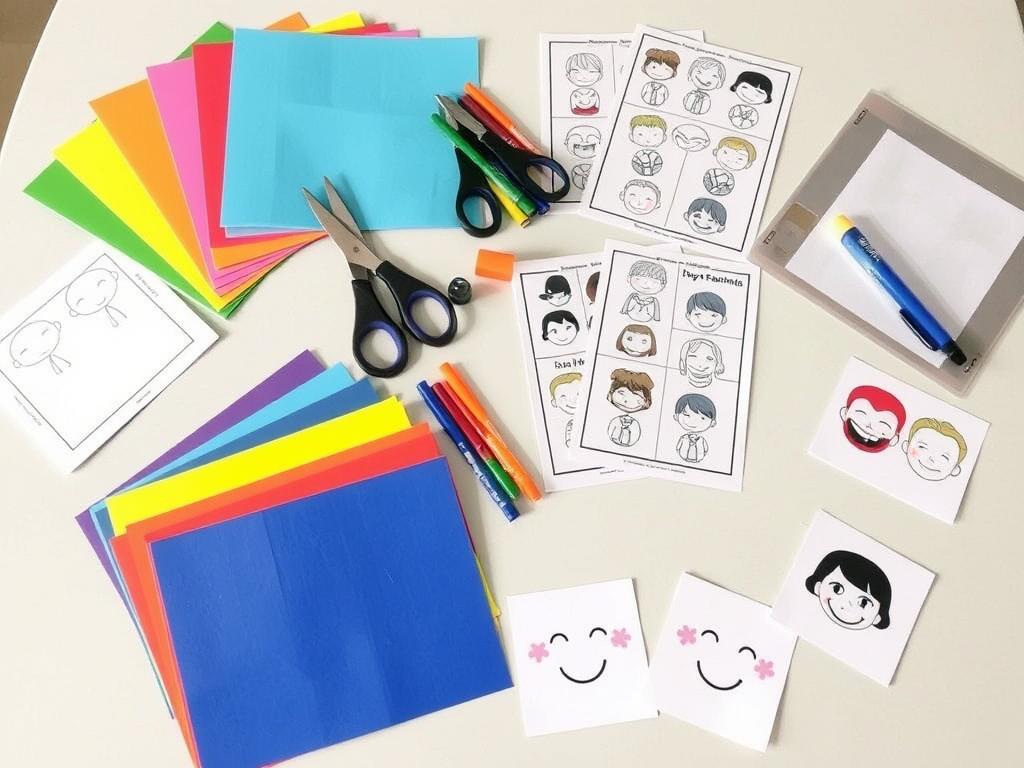
Creating your own feelings and emotions flashcards can be a rewarding activity to do with children. Not only is it cost-effective, but the process itself becomes a valuable learning experience about emotions.
Materials You’ll Need
- Cardstock or heavy paper – For durability
- Markers, crayons, or colored pencils – For creating expressive faces
- Scissors – For cutting cards to size
- Glue – If using magazine pictures or photos
- Laminating sheets or clear contact paper – Optional, for longer-lasting cards
- Photos or magazine pictures – Optional, for realistic expressions
Step-by-Step Instructions
- Choose your emotions – Start with the basic set of 10 emotions listed above
- Cut your cardstock – Aim for cards about 4×6 inches (index card size works well)
- Create your images – Draw simple faces showing each emotion, or cut out pictures from magazines
- Label each card – Write the emotion name clearly at the bottom of each card
- Add details – For older children, include a simple definition or example situation
- Protect your cards – Laminate or cover with clear contact paper for durability
- Create a storage solution – Use a small box, ziplock bag, or binder ring to keep cards organized

Creative Personalization Ideas
Photo Emotions
Take photos of your child or family members expressing different emotions. These personalized cards can be especially engaging for young children who recognize the faces.
Texture Cards
Add textured materials to represent different emotions (soft cotton for calm, sandpaper for angry). This multi-sensory approach works well for younger children.
Emotion Intensity Scale
For older children, create cards showing the same emotion at different intensities (slightly annoyed → frustrated → angry → furious). This helps with emotional granularity.
Situation Cards
Create companion cards with situations that might trigger each emotion (“When someone takes my toy without asking”). These can be matched with the emotion cards.
Involving Children in Creation: Having children help make the cards turns the process itself into a valuable learning experience. Ask them to show what “angry” looks like, discuss the physical signs of different emotions, and let them draw their own interpretations.
Incorporating Flashcards Into Daily Routines
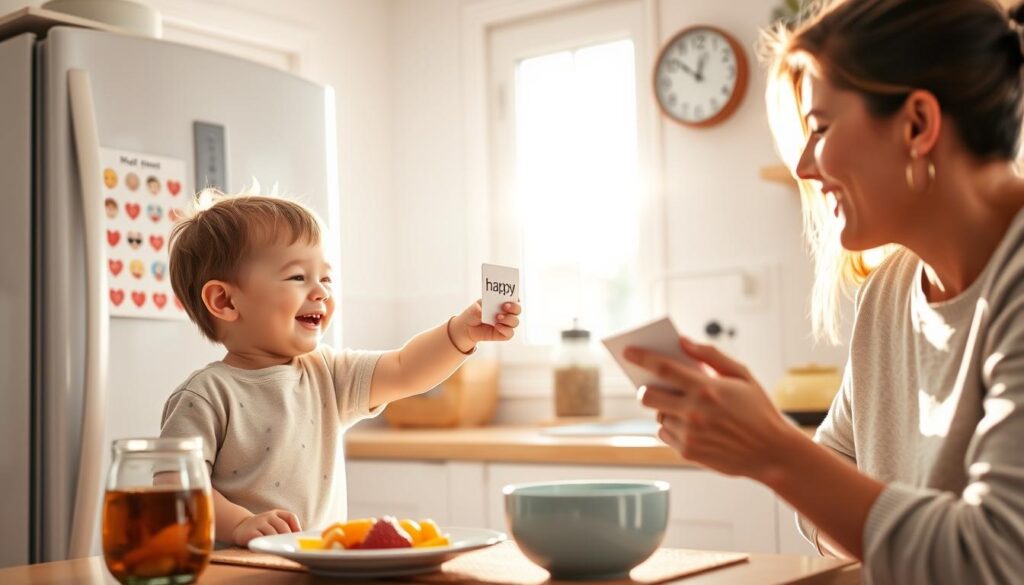
The real power of feelings and emotions flashcards comes from consistent, everyday use. By incorporating them into your regular routines, emotional vocabulary becomes a natural part of a child’s daily experience.
Simple Ways to Use Flashcards Every Day
Morning Check-In
Start the day by asking children to select a card that shows how they’re feeling. This builds self-awareness and gives you insight into their emotional state.
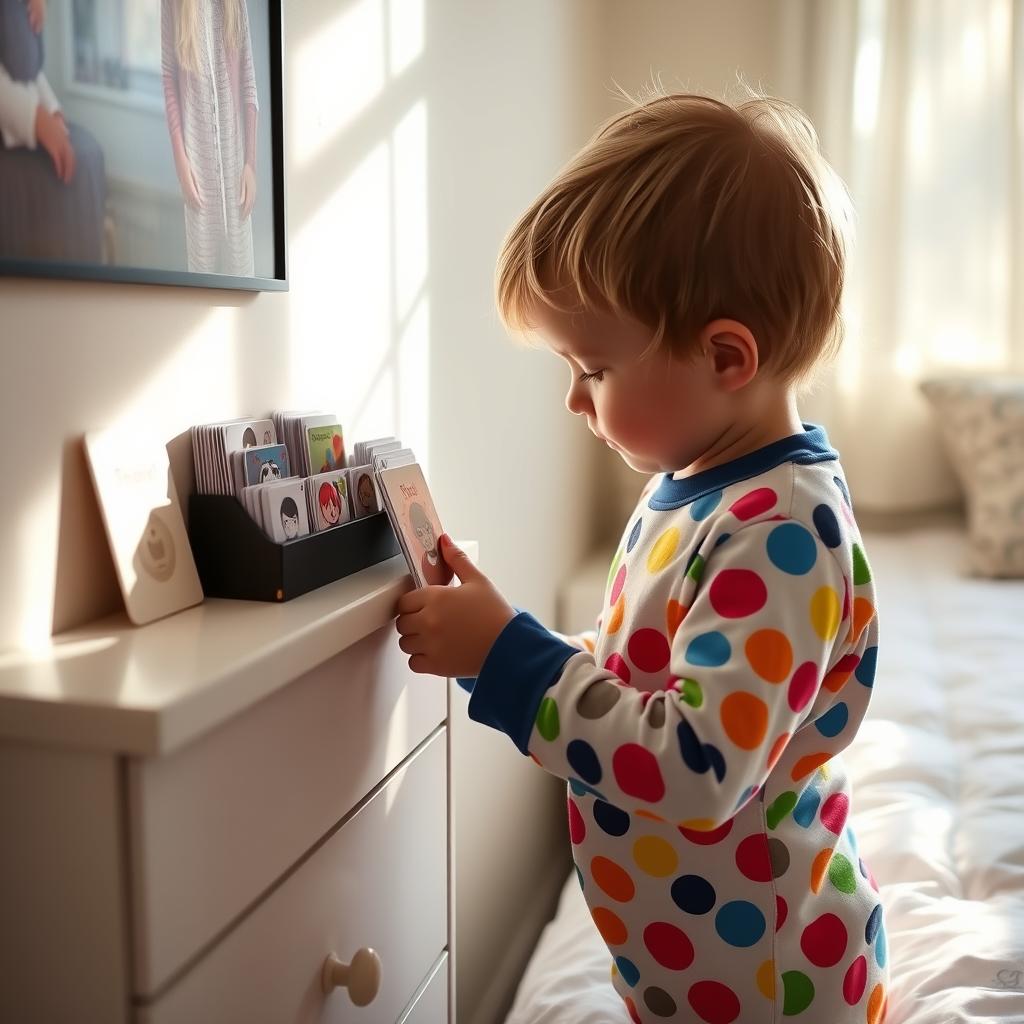
Transition Times
Use the cards during transitions between activities. Ask: “How did you feel during playtime?” and “How do you feel about starting homework now?”
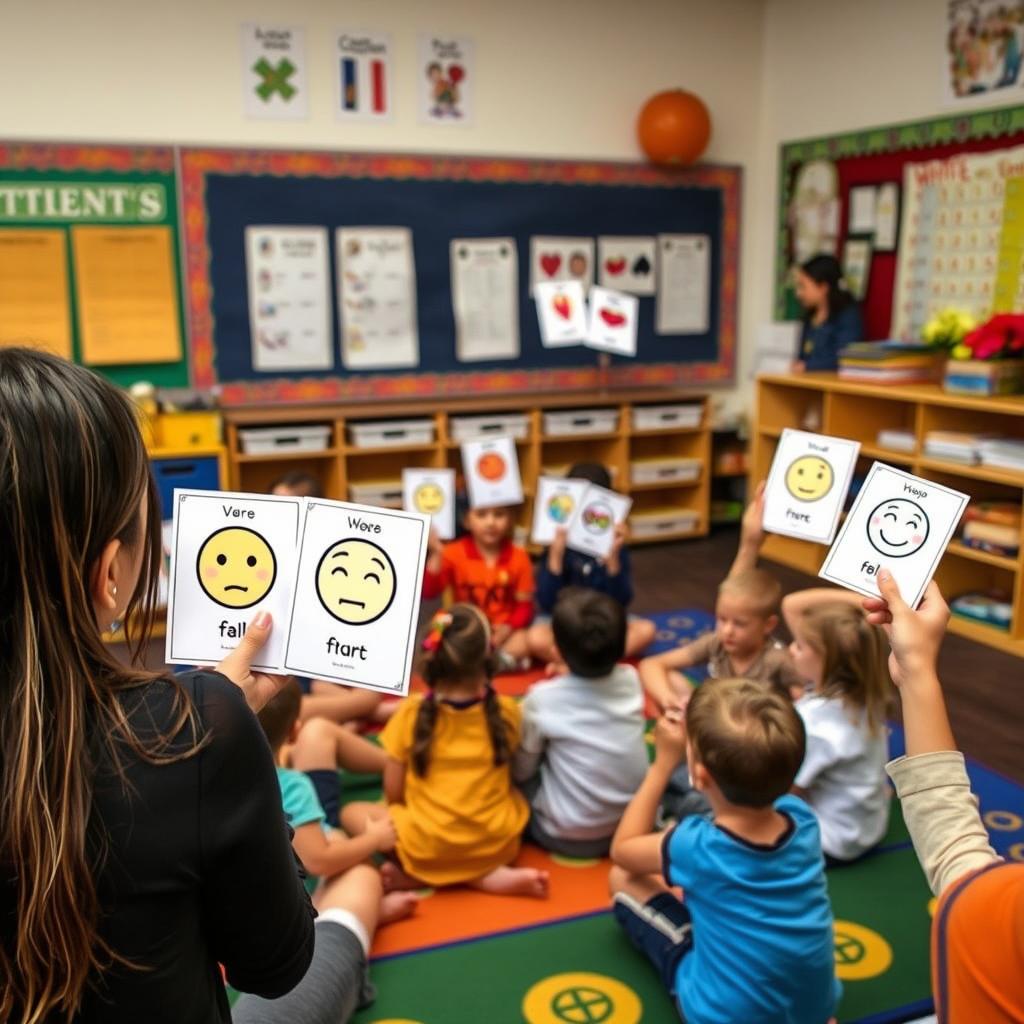
Bedtime Reflection
End the day by reviewing emotions experienced. “Let’s pick three cards that show how you felt today. Tell me about when you felt excited.”

Classroom Implementation Ideas
Feelings Check-In Board
Create a classroom display where children move their name or photo to different emotion cards throughout the day. This provides a visual representation of the classroom’s emotional climate.
Emotion of the Week
Focus on one emotion each week. Display the flashcard prominently, discuss situations that trigger this feeling, and practice appropriate responses.
Calm-Down Corner
Include emotion flashcards in your classroom’s calm-down area. Children can use the cards to identify what they’re feeling when overwhelmed or in conflict.
Literature Connections
When reading stories, use the flashcards to identify how characters might be feeling at different points in the narrative.
“When we help children name their emotions, we help them tame their emotions. Flashcards provide the visual and verbal tools children need to make sense of their internal experiences.”
Books, Games, and Resources That Pair Well With Flashcards
Feelings and emotions flashcards work best as part of a comprehensive approach to emotional intelligence. Here are complementary resources that enhance their effectiveness:
Recommended Children’s Books About Emotions
The Color Monster
by Anna Llenas
A monster whose emotions are all mixed up learns to sort and understand different feelings by associating them with colors.
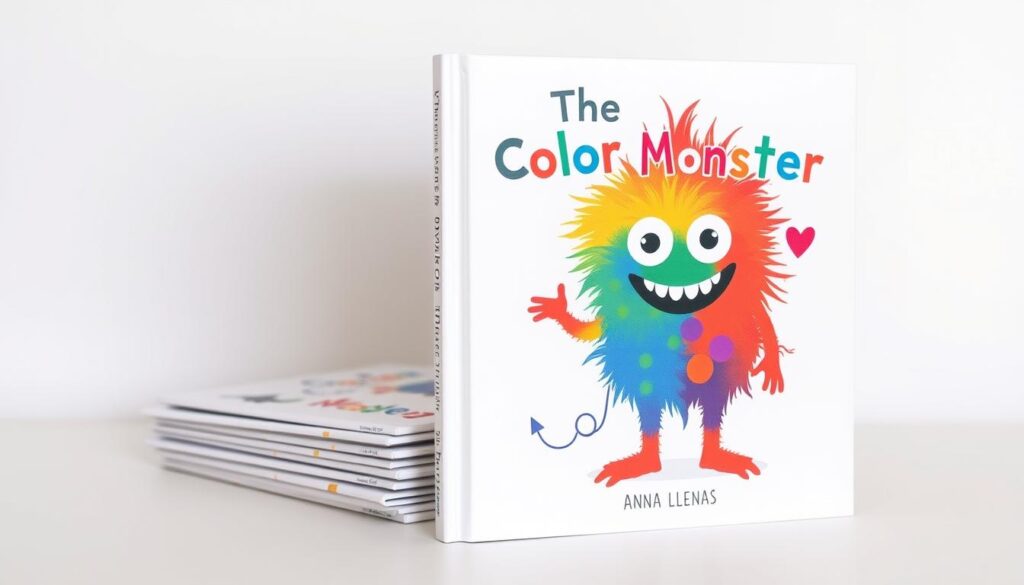
In My Heart
by Jo Witek
A beautifully illustrated book that explores emotions through simple text and die-cut heart pages that get smaller with each turn.
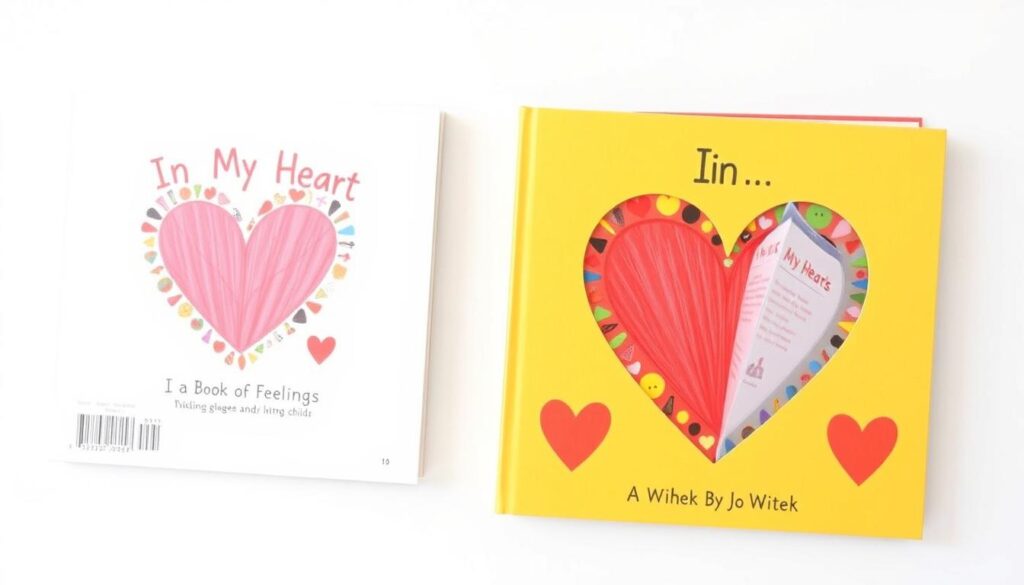
Today I Feel
by Madalena Moniz
An alphabet book of emotions that explores a different feeling for each letter, with beautiful illustrations that capture the essence of each emotion.
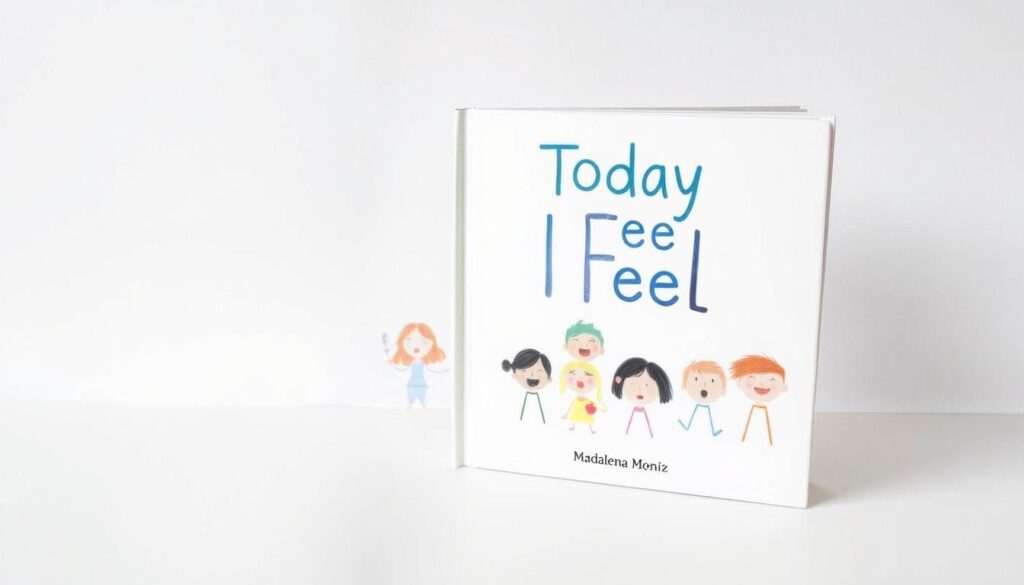
Complementary Games and Activities
Feelings Bingo
Create bingo cards with different emotions. Call out scenarios (“You got a new toy!”) and have children mark the corresponding emotion (excited, happy).
Emotion Charades
Use the flashcards as prompts for a game of charades, where children act out the emotion shown on the card they draw.
Feelings Journal
Pair flashcards with a simple journal where children can draw or write about their emotions each day, using the cards as visual prompts.
Emotion Soundtrack
Create a playlist of songs that represent different emotions. Hold up flashcards and play the corresponding music, discussing how the music conveys that feeling.
Conclusion: Small Cards, Big Impact
Feelings and emotions flashcards may seem simple, but their impact on a child’s emotional development can be profound. By making these visual tools a regular part of your interactions with children, you’re helping them build a foundation of emotional intelligence that will serve them throughout their lives.
Remember that consistency is key. Start with just a few basic emotions and gradually expand as children become comfortable identifying and discussing their feelings. The goal isn’t perfect emotional understanding overnight, but rather creating an ongoing conversation about emotions that grows and develops as children do.
Whether you choose to purchase a professionally designed set or create your own DIY version, the most important factor is how you use them. With patience, openness, and regular practice, these humble flashcards can become powerful tools for raising emotionally intelligent, empathetic, and resilient children.

Adam Peter is a finance, travel, and automotive writer with over a decade of experience. He creates clear, practical content to help readers manage their money, explore the world with confidence, and make informed decisions about cars and travel gear. His work blends expert insight with real-world usefulness.

